
Linda M. Shires, “Color Theory—Charles Lock Eastlake’s 1840 Translation of Johann Wolfgang von Goethe’s Zur Farbenlehre (Theory of Colours)”
The nineteenth century witnessed major developments in color theory, pigment manufacturing, and painting techniques. In 1840, Charles Lock Eastlake—painter, art scholar, and collector—translated Goethe’s 1810 Zur Farbenlehre or Theory of Colours as a handbook and a history, with his own erudite notes, to aid British painters. The volume aimed to offer nineteenth-century artists a deeper education in color than Royal Academy training, which still emphasized imitation of old masters with instruction in composition and line. Eastlake also aimed to restore Goethe’s Aristotelian emphasis on the eye’s perception of color. A focus of debate among scientists and artists, the anti-Newtonian Theory of Colours seriously engaged painters as different in style as J. M. W. Turner and Holman Hunt, both of whom were fascinated by color and nature as seen by the eye. Moreover, Eastlake’s learned notes remained unrivaled for their detailed knowledge of Aristotelian natural science and optics, early technical treatises on painting, and specific Renaissance paintings. Charles Lock Eastlake, a growing authority in the art world of London, went on to be knighted (1850), elected President of the Royal Academy (1850), and appointed the first Director of the National Gallery of Art (1855).

Deborah Epstein Nord, “On Augustus Egg’s Triptych, May 1858”
These three paintings representing the decline of a family as the result of the wife’s presumed infidelity cannot be read in strictly linear fashion, as if they followed the narrative structure of serial fiction. Rather, a reading of the painting that takes into account the spatial and iconographic relationship between the three panels yields the complex and open-ended meaning of the triptych’s story.

Sharon Aronofsky Weltman, “1847: Sweeney Todd and Abolition”
The prolific (but rarely remembered) Victorian playwright George Dibdin Pitt wrote the first Sweeney Todd dramatization in 1847 for the Britannia in London’s East End, tailoring his melodrama for the theater’s particular audience and the acting company’s individual talents. Not published until 1883 in Dick’s Standard Plays (as Sweeney Todd: The Barber of Fleet Street, or The String of Pearls), the printed play differs significantly from Dibdin Pitt’s original, which was initially performed on 1 March 1847 as The String of Pearls, or The Fiend of Fleet Street. Scholars who rely on the 1883 Sweeney Todd to discuss the 1847 melodrama are in many respects talking about a different play. One major difference involves a main character who appears only in the 1847 version. In the 1846-47 novel, a faithful dog named Hector is important to the plot; in the 1847 play, he is transformed into a major heroic character who foils the play’s villains — no longer a dog, but a deaf-mute black boy, a former slave from British Honduras who loyally continues to serve his former owner and current employer out of love and gratitude for his freedom. By including this character, Dibdin Pitt takes an identifiably abolitionist stance, working through what was still England’s strong sense of moral achievement in abolishing slavery and still strong sense of purpose in working to end slavery in the United States. But by 1883, in regards to race and colonialism, the cultural work of Dibdin Pitt’s play without Hector operates through an unthinking backdrop of the Empire’s power and the status quo of racial hierarchy.
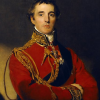
Sean Grass, “On the Death of the Duke of Wellington, 14 September 1852”
This essay discusses the death of the Duke of Wellington on 14 September 1852, which is notable less for the fact or manner of his death than for the spectacular funeral that followed two months later, on 18 November. By the time of his death, Wellington was already a kind of living monument, a last grand hero of England’s bygone Romantic age. Consequently, and precisely because it followed on the heels of the Great Exhibition of 1851, Wellington’s death crystallized a pivotal cultural moment, when England’s Romantic past gave way finally and decisively to the pressures of commodity, celebrity, and spectacle that had been mounting for a half-century, and that would characterize the increasingly modern tone of Victorian England. First, this essay discusses the lavish arrangements for Wellington’s state funeral, then it attempts to describe the nation’s complex impulses simultaneously to mourn and commodify the great Duke. Finally the essay captures, as much as possible, the ways that Britons – from Queen Victoria to William Gladstone to Charles Dickens – responded to this moment, unlike any other in English history.
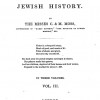
Karen Weisman, “Anglo-Jewish Culture and the Condition of England: The Poetry of Marion and Celia Moss”
In 1839, two young Jewish women poets, Marion and Celia Moss, published their first volume of poetry, Early Efforts. It is a volume laden with multiple—and often mutually contradictory—presentations of subjectivity, many of them relating to their Jewish authors’ consideration of England as a nation, an idea, and as an anchor for identity. 1839 also marks the publication date of Thomas Carlyle’s pamphlet, Chartism, in which he invoked “the condition of England question,” a phrase he coined to elucidate his dismay at the plight of the working classes and the consequent upheavals which were then roiling the nation. In bringing these two publications together under the rubric of this essay, I am hoping to shed light on some aspects of the context for Anglo-Jewish Romanticism, especially as it affects the self-understanding of its authors. Our consideration of the condition of England provides a forum in which to understand not only the grounds for agitation on the part of the disenfranchised but also the self-contradictory positions about the idea of England itself taken up with remarkable poignancy by the Mosses in their poetry. In so far as the stability of English identity depends, in part, on the cultural reification of hearth and home within the wider confines of the landscape, basic questions arise about the quotidian reality of English subjects: whose hearth, whose home, whose valorized landscape? These are the questions for the champions of disenfranchised industrial workers no less than for Jewish authors struggling to define an identity within an England which for its Jewish population has been, at turns (and sometimes simultaneously), alienating, sheltering, dismissive, grudgingly tolerant. I appropriate Carlyle’s questions of 1839 as a springboard into a discussion of the Moss poets’ volume of 1839, and its vexed reflections on their experience of England’s condition.
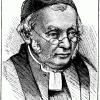
Laura Mooneyham White, “On Pusey’s Oxford Sermon on the Eucharist, 24 May 1843”
E. B. Pusey, one of the Oxford Movement’s most important figures, delivered a sermon on the Holy Eucharist to an Oxford audience of dons and students on 24 May 1843. Though not particularly controversial in its statements, the sermon was charged with heterodoxy—that is, heresy—and its author barred from preaching in the University for two years. The ensuing controversy constituted one of the more important battles of the late stages of the Oxford Movement (generally understood to have been underway between 1833 and 1845). Moreover, the controversy set the stage for the climax of the Movement in 1845, the defection to the Roman Catholic Church by the leader of the movement, Pusey’s fellow don and clergyman, John Henry Newman. This article contextualizes the scandal of Pusey’s sermon and punishment by providing a brief history of the Oxford Movement, especially its origins in response to the quiescence of the early nineteenth-century Anglican Church; it also explains the debates within the Church about the nature and proper practice of the sacrament of communion (Holy Eucharist). Last, the article argues that the official denunciation of Pusey’s sermon demonstrated both to members of the Movement and to the Anglican Establishment who opposed them that compromise between the two parties would be almost impossible to achieve.
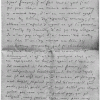
Kate Lawson, “Personal Privacy, Letter Mail, and the Post Office Espionage Scandal, 1844”
The Post Office espionage scandal of 1844 began with the revelation that the British government, at the behest of the Austrians, had opened letters sent to the Italian nationalist Giuseppe Mazzini, then resident in London. This essay examines how letters themselves were represented in discussions of the scandal in parliament, the press, and other sources in June of that year. Two key attributes of letters were repeatedly identified, that letters were private and that letters contained secrets. The essay argues that these two claims about letters helped shape emerging definitions of privacy in personal communications and that the scandal raised questions about reasonable expectations of privacy that are at once Victorian and distinctly contemporary.

Ellen Malenas Ledoux, “Florizel and Perdita Affair, 1779-80”
This article examines the cultural and political significance of the Prince of Wales’s early 1780s involvement with Drury Lane actress and poet Mary Robinson. Rather than just a romance between two public figures, the “Florizel and Perdita Affair” had wide-ranging effects that, when examined, offer meaningful insight into everything from the weakening influence of the Hanover dynasty and the campaigns of Whig opposition candidates to the aesthetics of formal portraiture, political cartoons, and popular fashion.
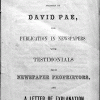
Graham Law, “22 May 1891: Ouida’s Attack on Fiction Syndication”
This essay explores the underlying developments which provoked the romantic novelist Ouida to launch a virulent attack in the correspondence columns of The Times on the syndication of fiction – that is, its broadcast distribution in newspapers – as the most alarming symptom of the commercialization of literature in the late nineteenth century.

Barbara Charlesworth Gelpi, “14 July 1833: John Keble’s Assize Sermon, National Apostasy”
This essay outlines the personal interactions and political events preceding John Keble’s delivery of a sermon later entitled National Apostasy to the judges gathered at Oxford for the Assize Court as a way of understanding the sermon’s significance in relation to the Oxford Movement.
